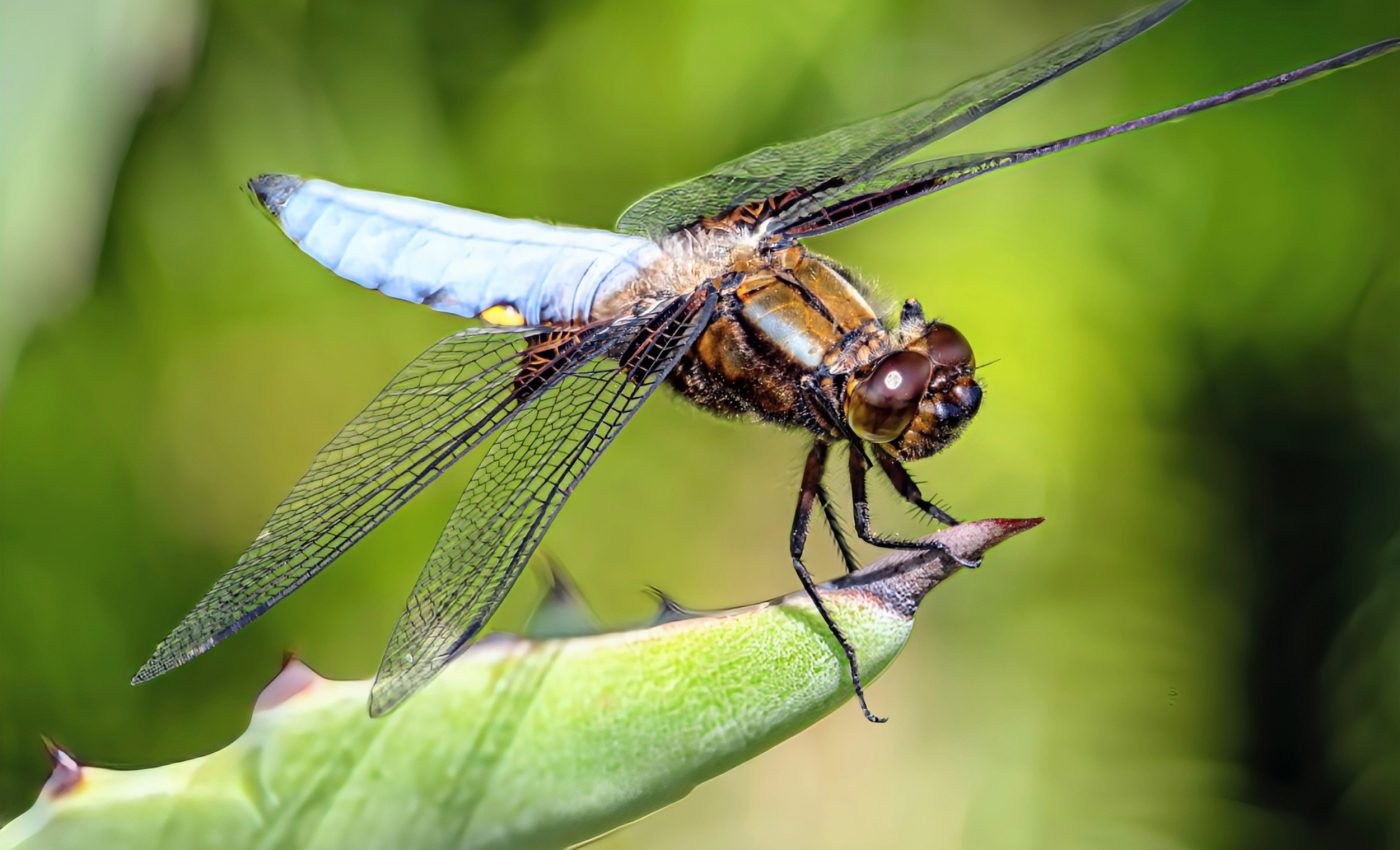
Dragonflies are perfect hunters, even in extreme temperatures
Have you ever watched a dragonfly zipping about, chasing its prey with pinpoint accuracy regardless of the shifting environmental conditions? Not even the hot summer sun or a cloud blockade seems to deter this nimble creature. And what else doesn’t falter? A dragonfly’s precision, even in extreme temperatures.
Dragonflies in a warming world
These remarkable insects are the subject of an exciting new study by researchers at the University of Adelaide and collaborators from Lund University in Sweden.
The research team, including PhD candidate Mahdi Hussaini and Professor Steven Wiederman from the University of Adelaide‘s School of Biomedicine, embarked on a mission to decipher how a dragonfly’s brain functions in different temperatures.
“Dragonflies are poikilothermic animals with limited thermoregulation, which means the temperature of their entire bodies, including their brains, vary and change throughout the day,” explained Hussaini, the paper’s lead author.
The power of neurons
So, what’s their secret? How do they manage to maintain their accuracy even as their brain temperature changes throughout the day?
“They have the ability to chase prey successfully whether in sunlight or under cloud cover, most likely due to small target motion detector (STMD) neurons in the visual pathway of a dragonfly’s brain,” explained Hussaini.
These STMD neurons are not only sensitive to target contrast but also finely tuned to the target’s size and velocity. As the temperature rises, these neurons adjust their sensitivity and speed. It’s like they have an inbuilt thermostat to adapt to the environment.
A summer’s day can drastically increase the sensitivity of STMD neurons to small moving targets, almost a nine-fold increase, to be precise.
Dragonflies: Predators in extreme temperatures
Dragonflies reign supreme as apex predators in their niche. They excel in chasing small prey within cluttered environments.
Using brain recordings, the researchers aim to craft neuro-inspired, computational models for target-tracking applications. This could pave the way for artificial vision systems capable of detecting fast-moving, aerial drones from autonomous vehicles.
But how is biology giving us the edge in engineering? “Inspiration from biology helps us to provide solutions to engineering problems from a different perspective,” noted Professor Wiederman.
Implications for robotics
The insights gleaned from dragonfly neural mechanisms extend beyond mere fascination; they hold transformative potential for the field of robotics.
Engineers are currently exploring how the principles observed in dragonflies can inform the design of advanced unmanned aerial vehicles (UAVs).
By integrating neuro-inspired algorithms that mimic the dragonfly’s predatory efficiency, future drones may achieve unparalleled agility and precision in complex environments. Such advancements could revolutionize not just military applications but also search-and-rescue operations, wildlife management, and agricultural monitoring.
Future research directions
As this groundbreaking study unfolds, it sets the stage for an array of future investigations into the fascinating world of insect neurobiology.
Researchers aim to delve deeper into the specifics of how temperature variations affect other aspects of dragonfly behaviour and cognition.
Questions remain about whether similar mechanisms are present in other poikilothermic species and how these principles can be generalized across the animal kingdom.
By understanding the nuances of these natural systems, scientists hope to uncover further innovations that bridge biology, technology, and environmental sustainability, paving the way for solutions inspired by the complexity and resilience of nature.
A pathway to the future
Despite our extensive knowledge about dragonflies, there are still unknown territories regarding the impact of external factors like temperature on a dragonfly’s perception.
“Given that biology rapidly changes in response to external factors like temperature, we need to understand what role this plays in information processing,” said Professor Wiederman.
This provides an intriguing direction for future research. How the dragonfly brain interprets temperature-altered information to still provide a robust perception will be an exciting avenue to explore. Not only from a biological standpoint but also from an engineering perspective.
“Until now, no one understood how large the impact of external factors (like daily changes in temperature) is on the dragonfly’s perception of the world (via changes in neurons’ spiking activity),” noted Professor Wiederman.
The study is published in the journal Current Biology.
—–
Like what you read? Subscribe to our newsletter for engaging articles, exclusive content, and the latest updates.
Check us out on EarthSnap, a free app brought to you by Eric Ralls and Earth.com.
—–













